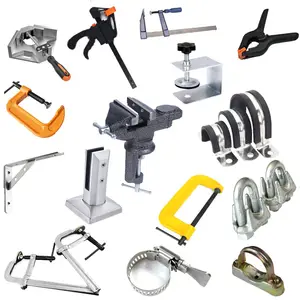

OEM ODM Custom Adjustable Draw Steel Toggle Clip Toggle Latch Hardware Heavy Duty Cabinet Toggle Clamp

Custom carbon steel galvanized stainless steel 304 316 Hose clamp U Wire rope Toggle Heavy duty F clamp





















The manufacturing sector has been thriving since the late 18th-century Industrial Revolution, fueled by innovations such as Thomas Savery's steam engine, agricultural advancements, and the introduction of new technologies. While the manufacturing sector is deeply integral to producing a wide array of products that define our modern lifestyle today, assembly lines act as the backbone for mass production across various industries. Even woodworking, once thought to be a relic of the past, is seeing a resurgence and is increasingly integrated with both manufacturing and assembly lines, as it gains traction among millennials who are drawn to sustainable living. Amidst this tightly knit ecosystem involving manufacturing, assembly lines, and woodworking, toggle clamps stand out as an ostensibly simple but versatile and effective tool for fastening applications.
A toggle clamp, often also known as a hold-down clamp or toggle latch, is a specialized mechanical device engineered for firmly anchoring objects into a stationary position. Utilized predominantly in production lines, its design incorporates a swift-acting clamping mechanism. By leveraging a handle or lever, it delivers rapid and secure locking and unlocking actions. The core advantage lies in its toggle link principle, allowing its clamping arm to retract sufficiently for unobstructed loading and unloading of the workpiece.
A wide variety of toggle clamps exists to meet diverse industrial and operational needs. Vertical toggle clamps are the most common, applying downward force for tasks like workpiece holding and fixturing. Conversely, horizontal toggle clamps are often used for assembly and fixture holding, providing horizontal clamping supports. Latch clamps, also known as toggle latch clamps, are commonly used for quick opening and closing of covers, lids, or containers. Additionally, pneumatic clamps that utilize compressed air are frequently employed in high-speed, large-scale manufacturing processes. Each type of clamp plays a significant role in its respective industry, serving specific needs.
Selecting the appropriate toggle clamp involves a few factors such as holding capacity and the type of workpiece. Firstly, it's essential to determine the clamping force needed to securely hold the object without causing damage. Whether a horizontal or vertical clamp is necessary, the orientation depends on specific operational requirements. Handle shape is another consideration; some clamps feature straight handles, while others have T-shaped grips, affecting the hand force needed for operation. Protection features like secondary locks are particularly important for heavy-duty toggle clamps used in challenging environments. For additional comfort and safety, users should consider holding force—the maximum pressure the clamp can withstand once engaged as well as ergonomics and ease of access.